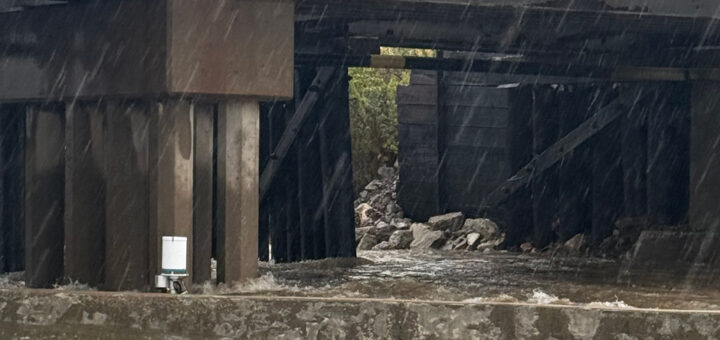Research Summary: Shifts In Diversity And Function Of Lake Bacterial Communities Upon Glacier Retreat
0Abstract
Global climate change is causing a wastage of glaciers and threatening biodiversity in glacier-fed ecosystems. The high turbidity typically found in those ecosystems, which is caused by inorganic particles and result of the erosive activity of glaciers is a key environmental factor influencing temperature and light availability, as well as other factors in the water column. Once these lakes loose hydrological connectivity to glaciers and turn clear, the accompanying environmental changes could represent a potential bottleneck for the established local diversity with yet unknown functional consequences. Here, we study three lakes situated along a turbidity gradient as well as one clear unconnected lake and evaluate seasonal changes in their bacterial community composition and diversity. Further, we assess potential consequences for community functioning. Glacier runoff represented a diverse source community for the lakes and several taxa were able to colonize downstream turbid habitats, although they were not found in the clear lake. Operational taxonomic unit-based alpha diversity and phylogenetic diversity decreased along the turbidity gradient, but metabolic functional diversity was negatively related to turbidity. No evidence for multifunctional redundancy, which may allow communities to maintain functioning upon alterations in diversity, was found. Our study gives a first view on how glacier-fed lake bacterial communities are affected by the melting of glaciers and indicates that diversity and community composition significantly change when hydrological connectivity to the glacier is lost and lakes turn clear.
Introduction
Glaciers respond to alterations in both, temperature and precipitation (Oerlemans, 2005), and the global retreat of glaciers and ice sheets has become one of the most prominent signals of anthropogenic climate change (Vaughan et al., 2013). The presence or absence of glaciers in catchments dominates the abiotic conditions in high mountain freshwater ecosystems (Jacobsen et al., 2012;Freimann et al., 2014). For instance, glaciers are a source of carbon (Hood et al., 2009; Singer et al., 2012; Stubbins et al., 2012) and nutrients (Slemmons and Saros, 2012; Sommaruga, 2015). Further, glacier basal motion causes abrasion of bedrock and particle formation. Meltwater transports these fine inorganic particles, leading to high turbidity in glacier-fed (that is, proglacial) freshwater ecosystems (Egholm et al., 2012). These particles range in size from clay to silt and pose a real challenge for filter-feeding organisms such as Daphnia or phagotrophic nanoflagellates (Koenings et al., 1990; Sommaruga and Kandolf, 2014;Sommaruga, 2015). However, turbidity drives other relevant environmental factors such as temperature (Gallegos et al., 2008) and light availability in the water column (Rose et al., 2014), causing unfavorable conditions for primary producers. In comparison with clear high mountain lakes, the communities of turbid proglacial lakes may thus be dominated by heterotrophic and eventually mixotrophic microbes (Sommaruga, 2015).

Faselfad lakes (Austria, Tyrol) located at 2400 meters above sea level showing the different water transparency caused by the influence of glacier (left) melt water with high turbidity. (Credit: Ruben Sommaruga via aslo.org)
Glacier retreat has been shown to threaten the specialized local biodiversity of macroinvertebrates (Milner et al., 2009; Jacobsen et al., 2012) and microorganisms in proglacial stream and floodplain ecosystems (Freimann et al., 2013; Wilhelm et al., 2013), but the consequence for the functioning of these ecosystems remains unresolved. On the short term, glacier retreat may increase turbidity in proglacial lakes, however, as glaciers continue to melt, the contribution of glacier meltwater to proglacial lakes will diminish. In the European Alps, for instance, wastage of glacier is most significant below 3000 m above sea level, and low-altitude glaciers are predicted to disappear within this century (Zemp et al., 2009). As the complete disappearance of glaciers will markedly influence the physical conditions of proglacial lakes, biodiversity and ecological functioning are likely to be affected by such a regime shift (Scheffer, 2003).
Headwater systems in general act as reservoirs of microbial diversity (Besemer et al., 2013) and liquid environments on and within glaciers are now recognized as habitat to diverse and active microbial assemblages (Anesio and Laybourn-Parry, 2012). Although glacier-derived microbial diversity has recently been shown to contribute only marginally to proglacial stream and biofilm communities (Wilhelmet al., 2013), the role of glacier runoff as a source of diversity for glacier-fed lakes remains unclear.
Here, we present results from a field study of four lakes in the proximity of a rapidly receding glacier in the Austrian Alps. Three of the lakes are connected to the glacier and situated along an altitudinal transect and represent a turbidity gradient. The fourth lake, situated behind a rocky ridge, has lost contact to the glacier and is clear. All lakes are remote and mostly unaffected by direct anthropogenic disturbance, highlighting their sentinel role in the landscape (Adrianet al., 2009).
We study the effects of glacial turbidity on bacterial community composition and diversity and estimate potential functional consequences using metagenome prediction. Furthermore, we assess the role of glacier runoff as a source of diversity for this metacommunity using a Bayesian mixing model. We hypothesize that bacterial diversity increases with decreasing turbidity, reflecting the contribution of allochthonous resources to glacier runoff. However, owing to limiting light availability and colder water temperature (Slemmons et al., 2013;Rose et al., 2014), we expect to find overall reduced diversity compared with the clear lake. We further hypothesize that the shift from turbid to clear conditions represents a bottleneck for the microbial communities that colonized the glacier-fed lakes, which likely is accompanied by a shift in community functioning.
Full study, including methods, results and discussion, published under open-access license in The ISME Journal.













